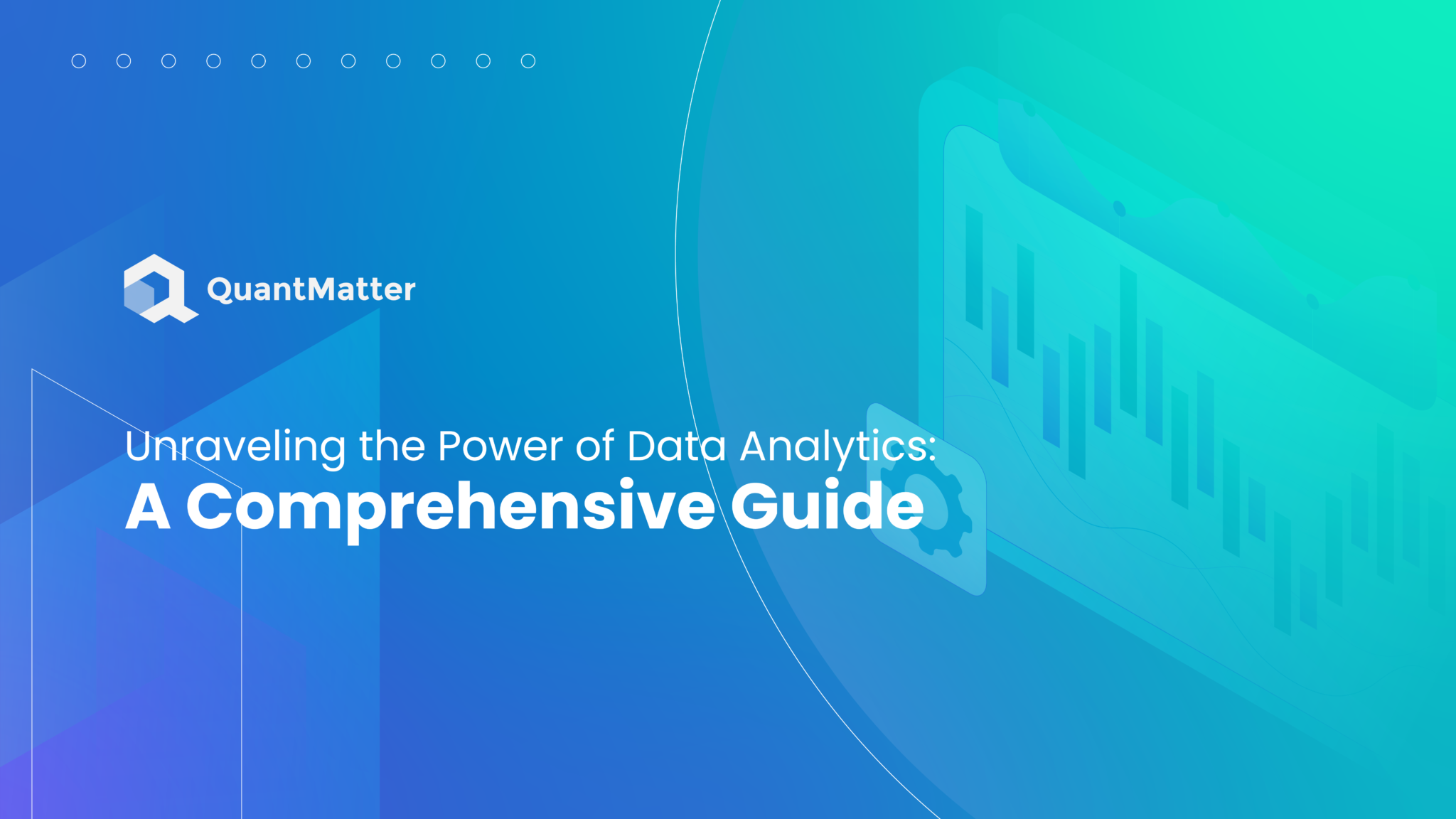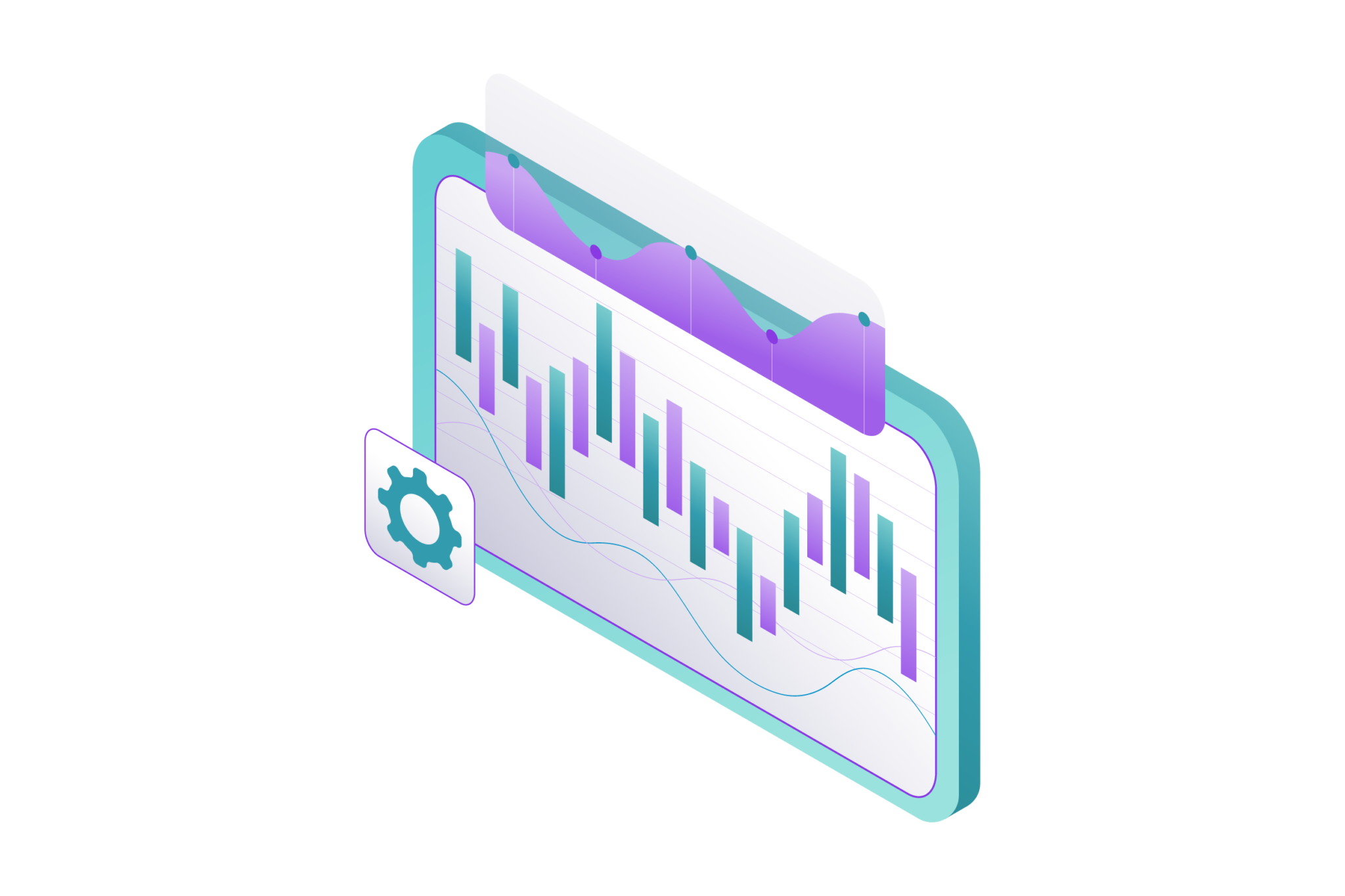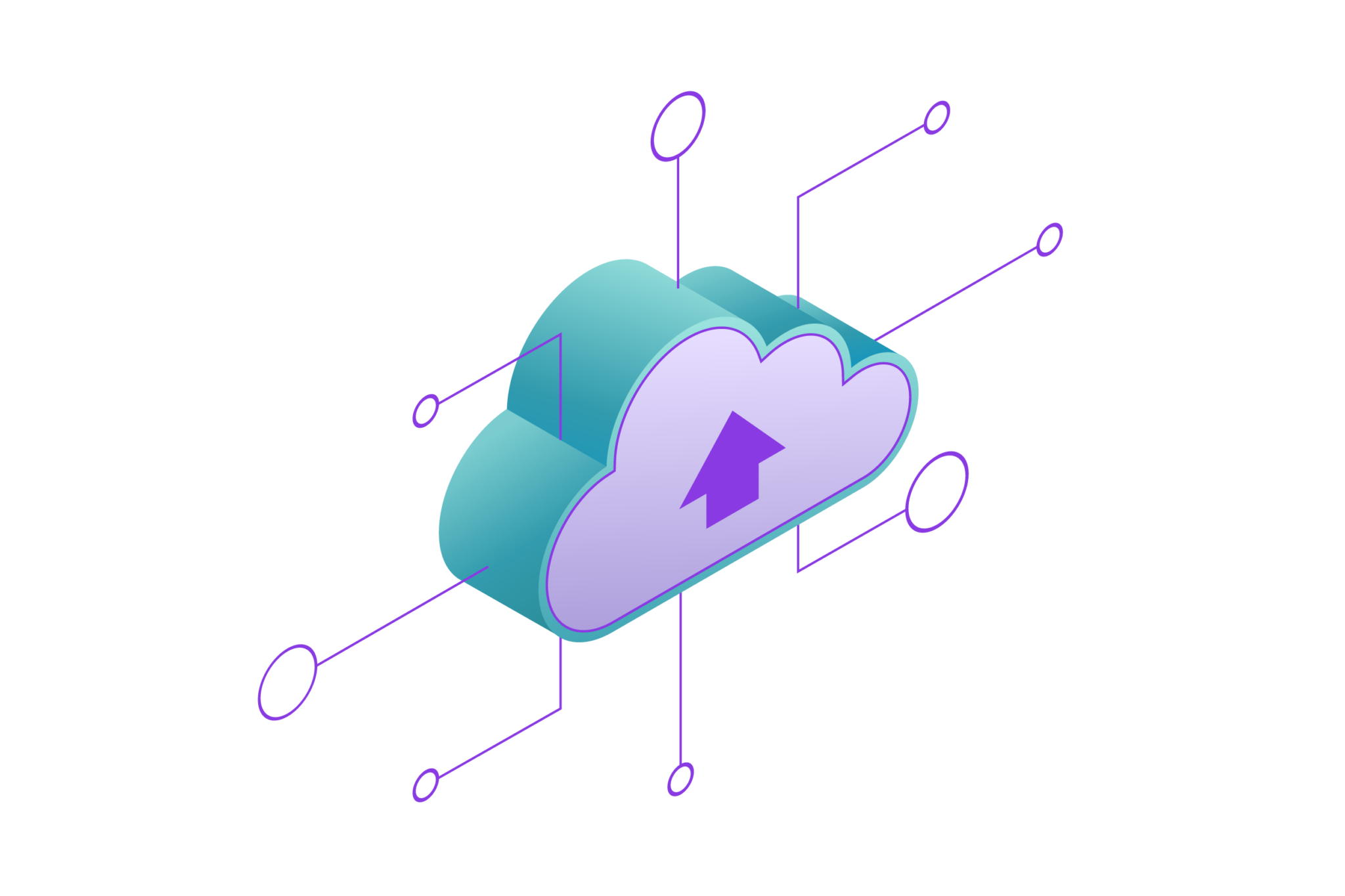
In the age of information overload, business and organizations are now looking to data analytics as a powerful tool in enabling them gain vital insights for making informed decisions and staying ahead within competitive landscape.
Dynamic analysis of data lies at the center as a game-changer for businesses seeking to acquire some form of competitive advantage in today’s information age. However, the importance of its application is monumental, as it will open a Pandora’s box of insights for organizations that can take them on the road to innovation and success. This article delves into the complexities of data analytics its relevance in all sectors and how to make use of it.
What is Data Analytics?

The ability to understand data analytics is fundamental when it comes to navigating the complexities of our increasingly data-driven world. As such, this discipline is concerned with a complete process that starts from gathering data across various sources. At this stage, it is necessary to stress the fact that data quality and cleanliness are very crucial which ensures reliability and accuracy of subsequent analyses.
When the data is collected, it sets into motion a ton of techniques. The analysis is done using statistical methods, machine learning algorithms and data mining. Descriptive analytics delivers a short overview of the historical data while predictive analytics aims at forecasting future trends. Unlike predictive analytics, prescriptive analytics provides actionable recommendations based on an analysis of current data.
Every data analyst must be proficient in working with numerous tools and technologies. Programming languages such as Python and R proficiency in SQL, adequate use of platforms like Jupyter Notebooks facilitates the efficiency level of analysis process. In addition, the capacity to transrate sophisticated outcomes into comprehensible perspectives for non-technical key players is essential.
In this aspect, visualization tools such as Tableau or Power BI play a crucial role. However, it isn’t only about technical superiority. Ethics are the most important consideration in data analytics. Privacy issues, ensuring compliance with data protection regulations and dealing with biases that may be present in the data or even within analytical processes must also be dealt by professionals.
A good data analyst must always continuously learn. The understanding of emerging trends and technologies is necessary for staying current with the constantly changing nature of industry demands. Regardless of whether it’s about researching new algorithms, developing improved visualization methods or simply understanding what the latest regulatory changes will mean; continuous learning is not negotiable.
In other words, data analytics is not just a matter of playing around with figures; it involves focusing on the broader picture in order to uncover valuable insights that will guide decision-making and strategy formation. By walking through the challenges associated with data collection, analysis and interpretation people as well as institutions can assist from understanding how to utilize information so that enable processes optimize decisions are made based on evidence allow a competitive edge in everything.
Data Analytics Applications Across Types of Industries

The importance of data analytics echoes throughout various sectors, shaping how organizations function and make choices. Here are key aspects of its impact:
1. Healthcare
Data analytics has transformed medicine by delivering personalized and more efficient patient care. Using the EHR allows medical professionals to have a deep understanding of patient histories, responses and reactions to treatments, as well as potential risk factors. Predictive analytics is highly useful in spotting potential outbreaks early on, allocating resources optimally and ensuring that healthcare providers are always ready for new health challenges. Furthermore, data-driven insights are also involved in clinical research, drug discovery and the development of medical innovations, thus moving the field forward to advance medicine.
Besides reducing the cost of patient care, healthcare organizations also gain from operational efficiency. Data analytics facilitates efficient processes such as appointment scheduling and inventory management, among others, which help minimize administrative labor so that healthcare providers can spend more of their time on patient care. The utilization of data analytics in healthcare institutions demonstrates how it has the potential to save lives, enhance outcomes and change approaches to treatment and prevention in this industry.
2. Finance
Data analysis plays a vital role in the financial sector when it comes to making informed decision, risk management and fighting against fraud. Predictive analytics helps financial institutions and their clients identify potential fraudulent transactions. Algorithmic trading also utilizes live data analysis to instantaneous investment decisions, optimizing portfolios and giving the best returns. Data analytics helps risk management a lot, with these institutions using past data to evaluate and find ways of preventing potential financial risks that pose threat to the stability of the financial sector.
Data analytics is also one of the main contributors to customer relationship management in finance industry. Financial institutions can also personalize their offerings, marketing approach according to customers’ behaviours and preferences by studying them. Data analytics provides insights that are not only financial but also in improving the security and trust basis of the whole financial system.
Also Read: Market Making: Strategies and Techniques
3. Retail
In the retail industry, data analytics has revolutionized how businesses perceive and engage their customers. Analysis of purchasing behaviors enables retailers to refine their customer segmentation and use marketing strategies as well as promotions specifically tailored in terms of demographics. Data analytics are instrumental in managing the inventory; they balance stock levels, decrease carrying costs and avoid stockouts by forecasting consumer demand patterns. Additionally, online retailers use data analytics to optimize the user experience by offering customized suggestions based on past behavior; this in turn increases sales and customer loyalty.
Data analytics for pricing optimization also benefit retailers. By analyzing the trends in markets, competitor pricing and customer reactions, businesses can strategize pricing to earn as much revenue while remaining competitive. Data analytics for the retail industry does not only increase operational efficiency but also fosters a better customer experience, making it an essential part of navigating through this consumer-driven market landscape.
4. Manufacturing
The manufacturing industry uses data analytics to enhance processes, minimize costs and enhance overall efficiency. Predictive maintenance is one of the main applications, in which data processing is used to predict when equipment will fail so as to implement preventative measures. This reduces downtime, prolongs machine life expectancy, and lowers overall maintenance charges. Also, data-driven insights are integral to supply chain management as they allow manufacturers to make accurate decisions about procurement, production scheduling and distribution.
Another area where data analytics is very useful in industry is quality control in manufacturing. Manufacturers can analyze data from their production processes to identify potential defects or issues before faulty products are produced, thus minimizing waste. Adoption of data analytics technology in manufacturing not only improves operational effectiveness but also helps establish sustainable and cost-effective production methods, thereby laying the foundations for a thriving practice in the future.
5. Telecommunications
The telecommunications industry utilizes data analytics to optimize its network performance and improve the customer experience. Network optimization entails processing massive data sets to determine and resolve issues related to network congestion, as well as ensuring perfect connectivity while improving the quality of services offered. Predictive modeling plays a vital role in identifying possible network failures, and this enables preventative measures to be taken well before the emergence of service disruptions. More importantly, data analytics improves the optimization of resources in telecom companies as the infrastructure gets allocated effectively depending on demand patterns.
Data analytics is thus an important component not only in terms of network-related applications but also when it comes to customer relationship management within the telecommunications industry. The analysis of customer data allows telecom companies to adjust their service offerings, anticipate the rate at which customers leave them, and practice selective marketing.
6. Education
In the education sector, data analytics is revolutionizing how institutions handle teaching, learning and administrative processes. Learning analytics, that is, the analysis of student data, enables teachers to determine patterns and trends associated with student performance.
This knowledge enables the use of individualized interventions to help students who are struggling and challenge those performing well, thus enhancing academic performance overall. Institutional data analytics is also applied to strategic planning, resource allocation optimisation and pinpointing areas where improvements can be made to improve the educational experience.
Additionally, information analytics supports evaluating the success of educational programs and curriculum development while also adapting teaching methods as student requirements change. Data analytics in education is not only an evolution of a system to improve performance but also streamlining the environment for learning and building individuals ready to prosper in a world that follows data.
Key Steps in Data Analytics

There are several essential steps to be taken in the process of data analytics that will help them find meaningful insights from the gathered information. Considering and proper implementation of these measures is critical for the success of the data analytics initiative. Here are the key stages:
Define Objectives and Questions
The first step in data analytics is to define the objectives and formulate questions clearly so as to guide the entire analytical process. This entails anchoring the analysis with overall business objectives or research intentions.
For instance, a retail business may focus on improving its marketing strategy by knowing what the customer wants to purchase, while an entity in healthcare would be seeking ways of enhancing patient outcomes through predictive analytics. Defining objectives creates a framework for sharp and goal-oriented analysis, thus ensuring that the insights gained feed directly into strategic decision-making.
Also Read: Market Maker Options: Definition and How They Make Money
Data Collection
The data collection phase includes obtaining information associated with the issue from various channels, repositories of databases or sources outdoors. It needs a strategic approach that ensures the collected data corresponds with the set goals.
In a marketing setting, this could be achieved by pulling customer data from online accounts and shopping records. For a scientific research project, data collection may involve the gathering of experimental results or survey responses. The quality of the data collected, how complete it was, and its relevance to the research were considered critical factors that directly influenced accuracy and validity in the analysis conducted later. Firm data collection processes provide a good basis for drawing practical conclusions and making informed choices.
Data Cleaning and Preprocessing
Cleaning and preprocessing raw data are important steps in making it ready for analysis. This encompasses the addressing of problems such as missing values, outliers and inconsistencies. For instance, in a data set that follows customers’ purchases, missing records can be filled with imputations.
Outliers are identified and dealt with to prevent their causing skewed results, while it is also necessary for any transformation of the involved data so that they will fit into assumptions about the uses of analytical methods used. Correct data cleaning improves the validity of subsequent studies, thus allowing one to draw reliable conclusions based on precise and typical information.
Exploratory Data Analysis (EDA)
Exploratory Data Analysis is a major step where the analyst visually and statistically compares the dataset. This includes producing summary statistics, developing visualizations and detecting possible patterns or trends.
EDA in marketing might identify connections between some customer behaviors and purchasing patterns. In healthcare, this could reveal relationships between the demographics of patients and their treatment outcomes. EDA not only helps you select the proper analysis techniques but also gives a general idea of how your data is structured, enabling you to refine research questions.
Data Modeling
In data modeling, one identifies and applies relevant statistical or machine learning models depending on the objectives of the analysis. For example, a financial institution could utilize regression models to forecast customer credit ratings, while a tech-oriented firm may employ machine learning algorithms for image classifications.
The selection of models is contingent on the nature of the data and the goals achieved in the analysis. This stage is essential in converting the raw data into usable information by employing sophisticated analytical techniques.
Challenges in Data Analytics
This exploration seeks to illuminate the complexities of these challenges and the urgent need for organizations to embrace multidimensional solutions that include technological innovations, organizational flexibility, and ethical concerns. Let’s dive into the subtle terrain of hurdles in data analytics and reveal what it takes to masterfully navigate these ordeals.
Data Quality and Integration
Ensuring that data is of high quality and well integrated stands as a fundamental challenge in the process of analytics. Data could come from various sources that are diverse in formats, structures and accuracy levels.
If the data are not complete or are distorted, it can result in faulty analyses that fail to produce valid insights. Data integration, harmonising data to make a coherent dataset, and dealing with inconsistencies are time-consuming processes that require very careful attention. Organizations struggle with maintaining data quality across its lifecycle phase, such as from collection to analysis, in order for their analytical efforts to be accurate and reliable.
Data Privacy and Security
Issues of data privacy and security are prominent in the field of data analytics. With the growing digitalization of information and the publication of strict regulations such as GDPR and CCPA, it is necessary to delicately balance extracting useful insights while maintaining individuals’ privacy.
Firms struggle to implement effective encryption, access controls, and anonymization techniques to safeguard sensitive data. In an era where data breaches and privacy violations are real concerns, the challenge is to find a happy medium between the utility of information collected or stored for use by someone masquerading as a customer representative.
Lack of Skilled Professionals
A big problem is a shortage of qualified data analysts and data scientists. The supply of people skilled in statistics, machine learning and programming is far less than the demand. Organizations have challenges when hiring and retaining specialists with the required skills to derive meaningful insights from data.
With the recurrent changes in technology, constant learning becomes a challenge for organizations that struggle to catch up with changing analytical techniques. Closing this skills divide will require the implementation of strategic initiatives like collaborative educational programs, in-house training schemes and creative hiring efforts to develop a capable workforce that’s prepared for the complexities of contemporary data analytics.
Interpreting Complex Results
Operating with complex analytical results, especially from intricate statistical models or advanced machine learning algorithms, poses a daunting task. To make an effective decision, presenting findings in terms that are understandable to non-technical stakeholders is important.
Some of the analytics outputs may be inherently complex and, as such, could cause varying degrees of misinterpretations or misunderstandings, thereby limiting their conversion into actionable strategies.
To address this challenge, it involves not only developing advanced analytical capabilities but also strong communication skills to ensure that the equity created from deep analyses is passed down in a manner understood by decision-makers across all organisational levels.
Ethical Concerns
Data analytics faces issues related to bias, discrimination and responsible data use; ethical considerations become more prominent. If not carefully designed and monitored, algorithms can inadvertently reinforce or intensify biases contained within the data.
On the one hand, ensuring fairness, transparency and accountability in analytics processes becomes an ongoing challenge as organizations strive to make decisions aligned with their ethical standards. It calls for the use of ethical frameworks, periodic reviews on algorithm development, and rather consideration into designing analytic models that are fair in operation. Organizations have to develop a culture of ethical awareness and a sense of responsibility so that they can deal with the challenges presented by ethics in data analytics.
Conclusion
One of the great perks of data analytics is its ability to dig through a huge amount of information and find useful patterns, correlations or trends. Through the power of innovative analytical tools and techniques, businesses can make educated decisions about what to improve in their operations for greater efficiency.
Furthermore, data analytics enables organizations to gain deep insight into customer behavior. By examining consumer data, businesses can understand the likes and dislikes of people, figure out what trends might emerge in the future, and offer their product or service to meet those needs as they change. Customer-centricity not only strengthens the bond between business and customers but also places it in an advantageous position for quick adaptation to market changes.
Disclaimer: The information provided by Quant Matter in this article is intended for general informational purposes and does not reflect the company’s opinion. It is not intended as investment advice or a recommendation. Readers are strongly advised to conduct their own thorough research and consult with a qualified financial advisor before making any financial decisions.

I craft stories that make complex ideas clear. I simplify the blend of data science, machine learning, and crypto trading, showcasing how advanced tech and quantitative models analyze data for informed trading choices. Join me in exploring the realm of quantitative trading, where my narratives make intricate concepts easy to grasp.
- Alifia Berizkyhttps://quantmatter.com/author/alifia-berizky/
- Alifia Berizkyhttps://quantmatter.com/author/alifia-berizky/
- Alifia Berizkyhttps://quantmatter.com/author/alifia-berizky/
- Alifia Berizkyhttps://quantmatter.com/author/alifia-berizky/
